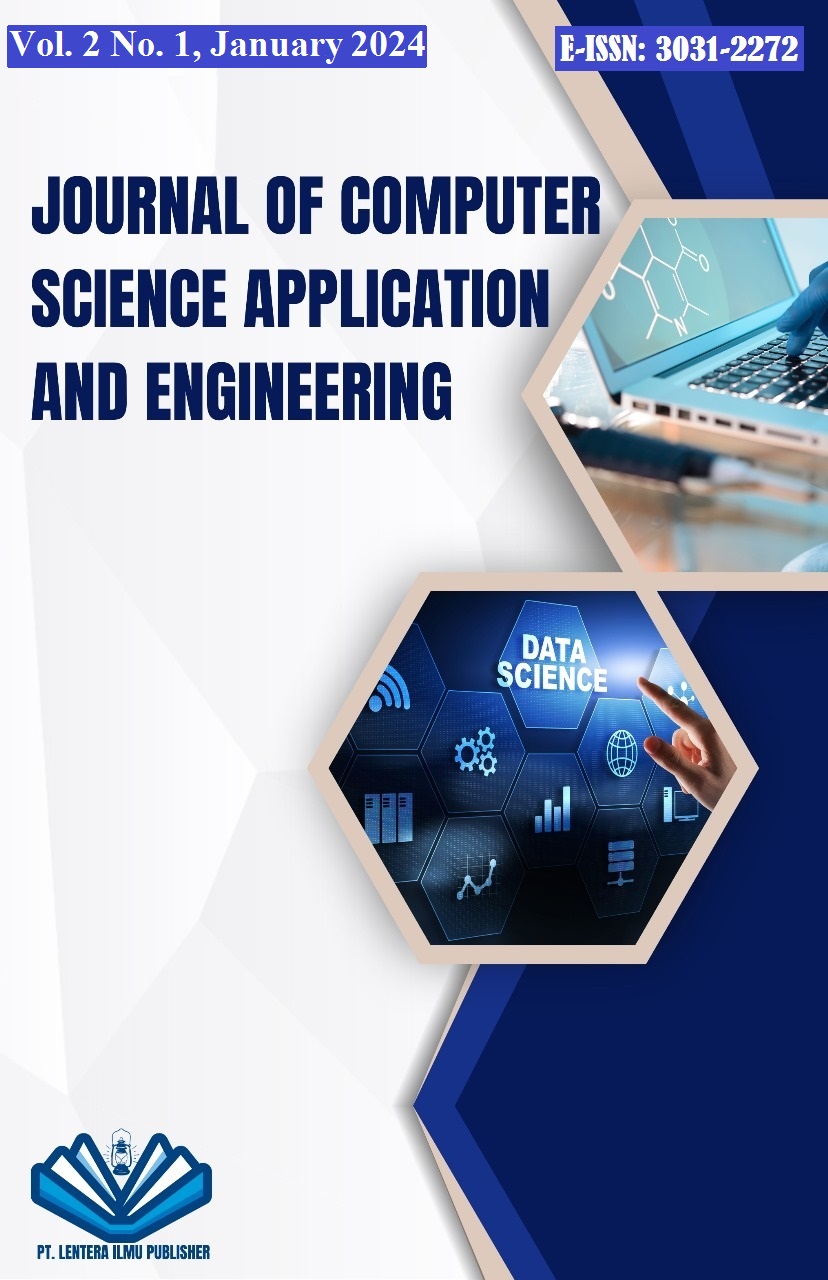Empowering Education: Cloud Solutions for Remote Schools in Indonesia
DOI:
https://doi.org/10.70356/josapen.v2i1.23Keywords:
Cloud Technology, Remote Schools, Educational Landscape, Geographical Barriers, Technology-driven EducationAbstract
This article explores the transformative potential of cloud solutions in addressing the educational challenges faced by remote and underserved regions in Indonesia. The introduction highlights the significance of technology integration in education and emphasizes the obstacles Indonesia encounters in delivering quality education to remote areas. Cloud solutions emerge as a promising avenue, providing scalable tools to bridge the urban-rural learning gap. The literature review delves into the transformative impact of cloud-based education, citing studies that emphasize enhanced student engagement and personalized learning experiences. It underscores the importance of factors such as infrastructure development, internet connectivity, and digital literacy, essential for the success of cloud-based education in remote areas. Cultural considerations are also discussed, emphasizing the need to align technology with local values. The methodology section outlines the research steps, including a literature review, real-world implementation examples, exploration of potential benefits, and practical suggestions for policymakers and educators. Real examples of successful cloud technology implementations illustrate the positive outcomes, ranging from improved access to educational resources to streamlined administrative processes. The author summarizes the potential of cloud solutions, highlighting aspects such as accessibility, scalability, cost-effectiveness, collaboration, and personalized learning.
Downloads
References
A. Cahyadi, Hendryadi, S. Widyastuti, V. N. Mufidah, and Achmadi, “Emergency remote teaching evaluation of the higher education in Indonesia,” Heliyon, vol. 7, no. 8, 2021, doi: 10.1016/j.heliyon.2021.e07788.
R. C. I. Prahmana, D. Hartanto, D. A. Kusumaningtyas, R. M. Ali, and Muchlas, “Community radio-based blended learning model: A promising learning model in remote area during pandemic era,” Heliyon, vol. 7, no. 7, p. e07511, 2021, doi: 10.1016/j.heliyon.2021.e07511.
N. Verma, D. S. Getenet, D. C. Dann, and T. Shaik, “Designing an artificial intelligence tool to understand student engagement based on teacher’s behaviours and movements in video conferencing,” Comput. Educ. Artif. Intell., vol. 5, no. November, p. 100187, 2023, doi: 10.1016/j.caeai.2023.100187.
M. Martín-Sómer, C. Casado, and G. Gómez-Pozuelo, “Utilising interactive applications as educational tools in higher education: Perspectives from teachers and students, and an analysis of academic outcomes,” Educ. Chem. Eng., vol. 46, no. September 2023, pp. 1–9, 2024, doi: 10.1016/j.ece.2023.10.001.
S. Alhomdy, F. Thabit, F. H. Abdulrazzak, A. Haldorai, and S. Jagtap, “The role of cloud computing technology: A savior to fight the lockdown in COVID 19 crisis, the benefits, characteristics and applications,” Int. J. Intell. Networks, vol. 2, no. October, pp. 166–174, 2021, doi: 10.1016/j.ijin.2021.08.001.
S. F. Ahmed et al., “Industrial Internet of Things enabled technologies, challenges, and future directions,” Comput. Electr. Eng., vol. 110, no. January, p. 108847, 2023, doi: 10.1016/j.compeleceng.2023.108847.
V. Terzieva, S. Ilchev, and K. Todorova, “The Role of Internet of Things in Smart Education,” IFAC-PapersOnLine, vol. 55, no. 11, pp. 108–113, 2022, doi: 10.1016/j.ifacol.2022.08.057.
P. Ziemba, M. Piwowarski, and K. Nermend, “Software systems supporting remote education – Fuzzy assessment using a multi-criteria group decision-making method,” Appl. Soft Comput., vol. 149, no. September, 2023, doi: 10.1016/j.asoc.2023.110971.
E. Yetti, “Journal of Open Innovation : Technology , Market , and Complexity Pedagogical innovation and curricular adaptation in enhancing digital literacy : A local wisdom approach for sustainable development in Indonesia context,” J. Open Innov. Technol. Mark. Complex., vol. 10, no. 1, p. 100233, 2024, doi: 10.1016/j.joitmc.2024.100233.
N. Craddock et al., “Evaluating a school-based body image lesson in Indonesia: A randomised controlled trial,” Body Image, vol. 48, no. August 2023, 2024, doi: 10.1016/j.bodyim.2023.101654.
F. Parra, A. Jacobs, and L. L. Trevino, “Shippy Express: Augmenting accounting education with Google Sheets,” J. Account. Educ., vol. 56, p. 100740, 2021, doi: 10.1016/j.jaccedu.2021.100740.
R. Jardim, L. Santos, H. Rodrigues, J. França, and A. Vivacqua, “Measurement of collaboration with agile practices in a Virtual Learning Environment,” Procedia Comput. Sci., vol. 221, pp. 33–40, 2023, doi: 10.1016/j.procs.2023.07.005.
Ifanov, P. Jessica, S. Salim, M. E. Syahputra, and P. A. Suri, “A Systematic literature review on implementation of virtual reality for learning,” Procedia Comput. Sci., vol. 216, no. 2022, pp. 260–265, 2022, doi: 10.1016/j.procs.2022.12.135.
J. Jenkins and S. Rashad, “LeapASL: A platform for design and implementation of real time algorithms for translation of American Sign Language using personal supervised machine learning models,” Softw. Impacts, vol. 12, no. April, p. 100302, 2022, doi: 10.1016/j.simpa.2022.100302.
Y. J. Lee and P. Roger, “Cross-platform language learning: A spatial perspective on narratives of language learning across digital platforms,” System, vol. 118, no. March, p. 103145, 2023, doi: 10.1016/j.system.2023.103145.
C. F. A. Arranz, M. F. Arroyabe, N. Arranz, and J. C. F. de Arroyabe, “Digitalisation dynamics in SMEs: An approach from systems dynamics and artificial intelligence,” Technol. Forecast. Soc. Change, vol. 196, no. December 2022, p. 122880, 2023, doi: 10.1016/j.techfore.2023.122880.
Downloads
Published
How to Cite
Issue
Section
License
Copyright (c) 2024 Asiyah Ahmad

This work is licensed under a Creative Commons Attribution-ShareAlike 4.0 International License.










